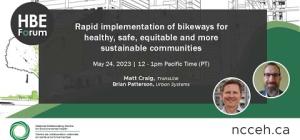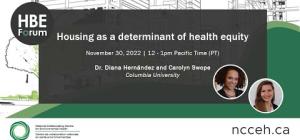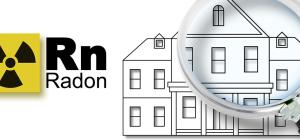
Healthy built environment
Background
Aspects of the built environment, including man-made and natural features, impact human health directly and indirectly through air quality, traffic injuries, and toxic substances. These aspects can also modify and influence physical activity levels, social connectedness and interactions, access to healthy foods, mobility, and housing quality. Many of these environmental and social determinants contribute to the rising prevalence of chronic diseases and related health conditions in the Canadian population. The Chief Public Health Officer’s Report on the State of Public Health in Canada 2017 – Designing Healthy Living emphasizes the linkages between the built environment and chronic diseases and conditions. Her report also advocates for collaboration between local governments and other sectors to create healthier communities through neighbourhoods and designs that support healthy behaviours and lifestyles.
This collection of resources:
- Introduces environmental health and public health practitioners to the field of healthy built environment (HBE);
- Provides the rationale for environmental health and public health involvement in promoting healthy communities;
- Help to identify opportunities for multisectoral discussions and collaborations
- Assists with program planning in HBE work.
NCCEH resources
- Food Deserts and Food Swamps: A Primer (2017)
This primer discusses related health implications, provides the rationale for consideration by non-nutrition professionals, and highlights some opportunities for action and collaboration with provincial and municipal governments, as well as business operators.
- What role for environmental public health practitioners in promoting healthy built environments? (2016)
This peer-reviewed article discusses the intersections between EPH and the built environment, and provides examples of current built environment work in environmental health practice as well as recommendations and opportunities for an expanded EPH role.
- Integrating indigenous community planning into a healthy built environment (2016)
In collaboration with NCCAH, these presentations address different aspects of a holistic approach towards integrating the natural and built environment, economy, and health in Indigenous community planning.
- Food environments: An introduction for public health practice (2015)
This document introduces the concept of food environments, highlights some key evidence for the relationship between food environments and health, and identifies some ways environmental public health practitioners can influence food environments.
- Green space and mental health: Pathways, impacts and gaps (2015)
This evidence review demonstrates the principle pathways and mechanisms linking green space and mental health, and assesses the epidemiological evidence of how green spaces impact mental health.
- Intersection between the built and social environments and older adults’ mobility (2012)
This evidence review assesses the links between built and social environmental factors, and older adults’ ability to move about and carry out physical activities, with a focus on non-motorized personal mobility (e.g., walking).
- Community planning with a health equity lens: Promising directions and strategies (2011)
This evidence review discusses how effective healthy community planning can help to reduce health inequities, and provides several ways to apply an equity lens to healthy community planning.
- Bringing health back into planning: Overview of Canadian tools and cross-sector action (2011)
This workshop at EcoCity World Summit includes four presentations on Canadian tools on HBE, and collaborative projects between health and planning. Please note that the Healthy Built Environment Inventory has been retired.
- Active transportation in urban areas: exploring health benefits and risks (2010)
This evidence review highlights the health and societal-level benefits of active transportation and potential associated risks, and provides recommendations for mitigating these risks.
- Built environment readiness assessment (2010)
This suite of resources are designed to help assess whether your organization is ready to initiate work in HBE.
Selected external organizations and resources
- Canadian Urban Environmental Health Research Consortium (CANUE)
The mission of CANUE is to bring together research and policy to increase scientific understanding of how physical features of the urban environment impact health, to promote the development of policies and interventions that will reduce the burden of chronic diseases and minimize the impact of changing environments.
- Canadian Institute of Planners (CIP) Resource Library
This website contains a collection of resources related to planning, organized by topics including healthy communities, climate change, transportation, indigenous peoples, and northern communities.
- Built Environment Project Page (National Collaborating Centre for Healthy Public Policy)
This webpage outlines the publications, presentations, and other resources related to HBE available from the NCCHPP, including areas such as active transportation, road design, and more.
- The Evolution of BC’s Healthy Built Environment Teams: Learnings, Successes and Next Steps (BC Centre for Disease Control, 2018)
This document describes HBE teams and related work in BC health authorities, provides reflections and learnings on their evolution and process, and discusses future directions on how to move the HBE agenda forward.
- Community Wellbeing: A Framework for the Design Professions (Conference Board of Canada, 2018)
This framework defines and evaluates how the built environment influences community wellbeing through social, economic, environmental, cultural, and political conditions.
- Healthy built environment linkages toolkit for design, planning, and health (BC Centre for Disease Control, 2018)
Currently in its second edition, this foundational document links community design, planning, and health, and assesses the strength of evidence for links between planning principles in each of the five physical features and health impacts and outcomes.
- The built environment: Understanding how physical environments influence the health and well-being of First Nations peoples living on-reserve (National Collaborating Centre for Aboriginal Health, 2018)
This document summarizes how the built environment influences the health and well-being of First Nations reserve communities, focusing on five areas including: housing; water and wastewater management; food security; active living; and transportation.
- Public Health and Planning 101 (Ontario Public Health Association, 2016)
This online course aims to bridge the gaps between the understanding of health and built environment for public health and planning professionals to provide greater opportunities for partnership and the creation of HBE.
- Healthy Communities Policy Guide (American Planning Association, 2017)
This guide identifies policy options for government officials and land use planners to build, improve, and promote healthy communities and man-made environments, and integrate health in planning decisions.
- Pathways to Policy: Lessons Learned from the Coalitions Linking Action and Science for Prevention (CLASP) Initiative For Physical Activity and Built Environment Policy (Canadian Partnership Against Cancer, 2017)
This report identifies and analyzes key lessons learned from CLASP products and cross-CLASP evaluation data related to policy interventions and policy changes in the areas of physical activity and built environments.
- Pathways to Policy: Lessons Learned from the Coalitions Linking Action and Science for Prevention (CLASP) Initiative For Nutrition and Food Environment Policy (Canadian Partnership Against Cancer, 2017)
This report identifies and analyzes key lessons learned from CLASP products and cross-CLASP evaluation data related to policy interventions and policy changes in the area of food environments.
- Healthy Built Environments: Training for Health Professionals Resources (PlanH, 2016)
These resources aim to increase the understanding of public health professionals on HBE concepts, and equip them with the knowledge and tools to take action in their communities to promote HBE.
- Healthy Rural Communities Tool Kit – A Guide for Rural Municipalities (Caldwell et al, 2015)
This toolkit discusses existing effective land use planning and development strategies, policies, and initiatives that can help to enhance rural built environments and contribute to healthy communities and positive health outcomes.








